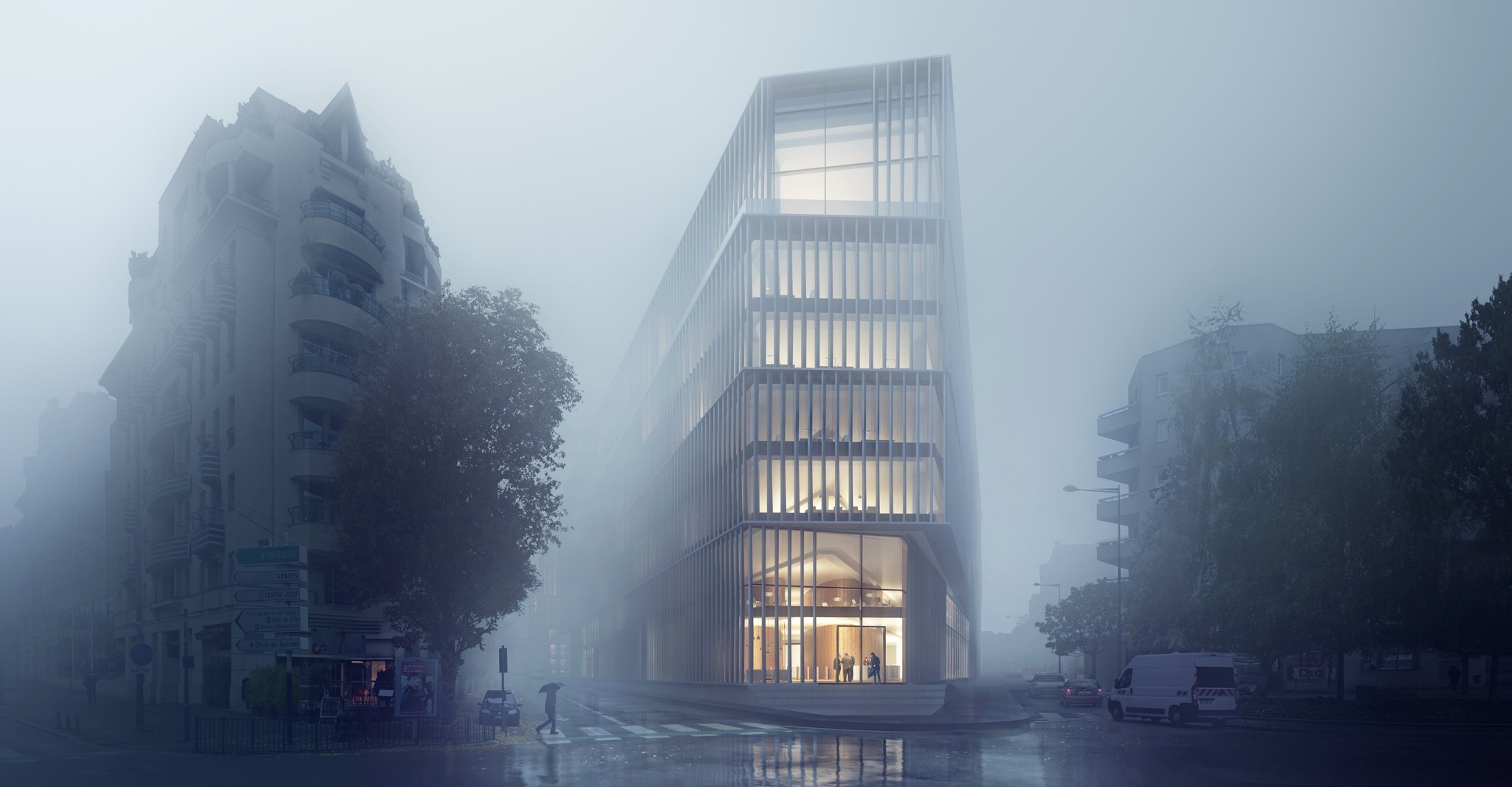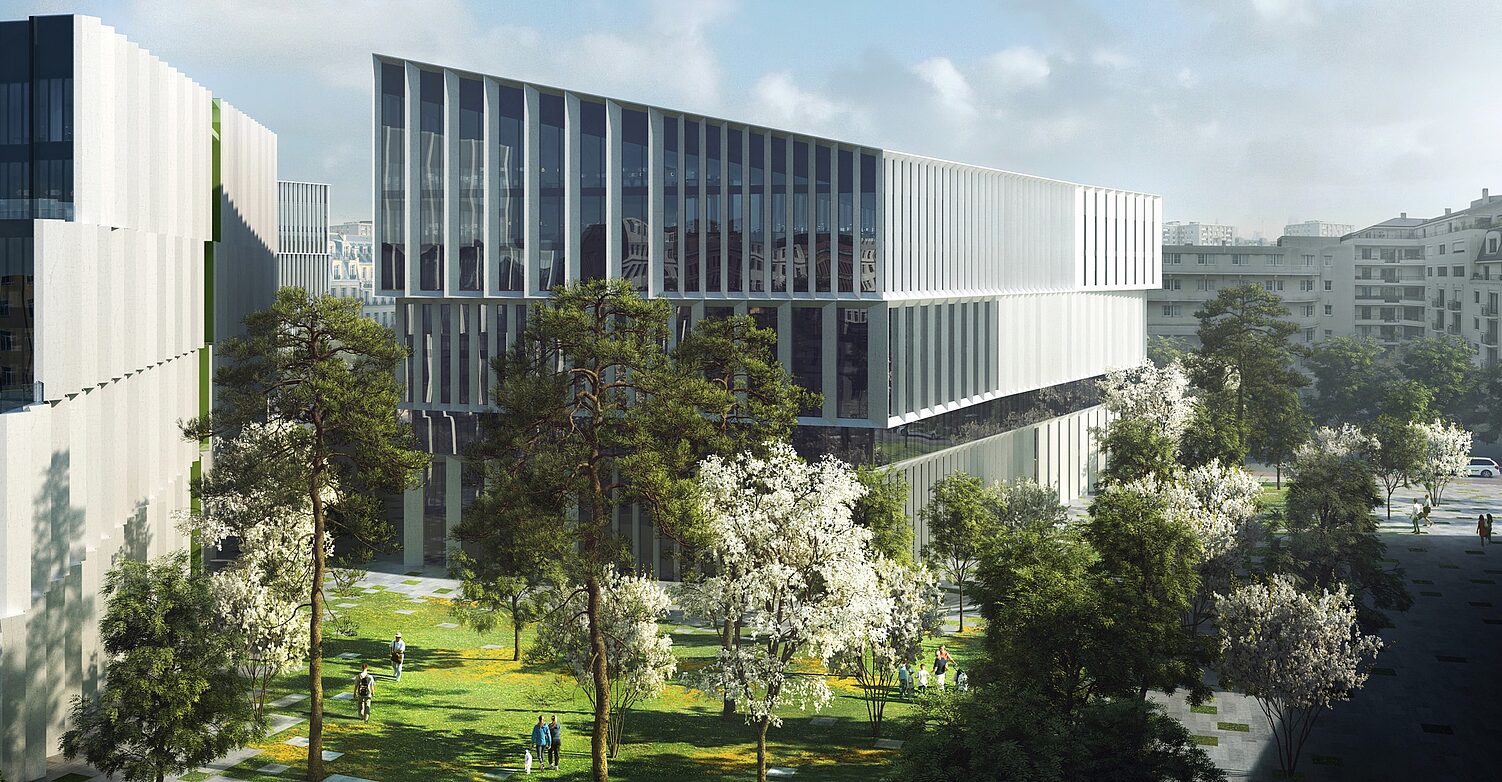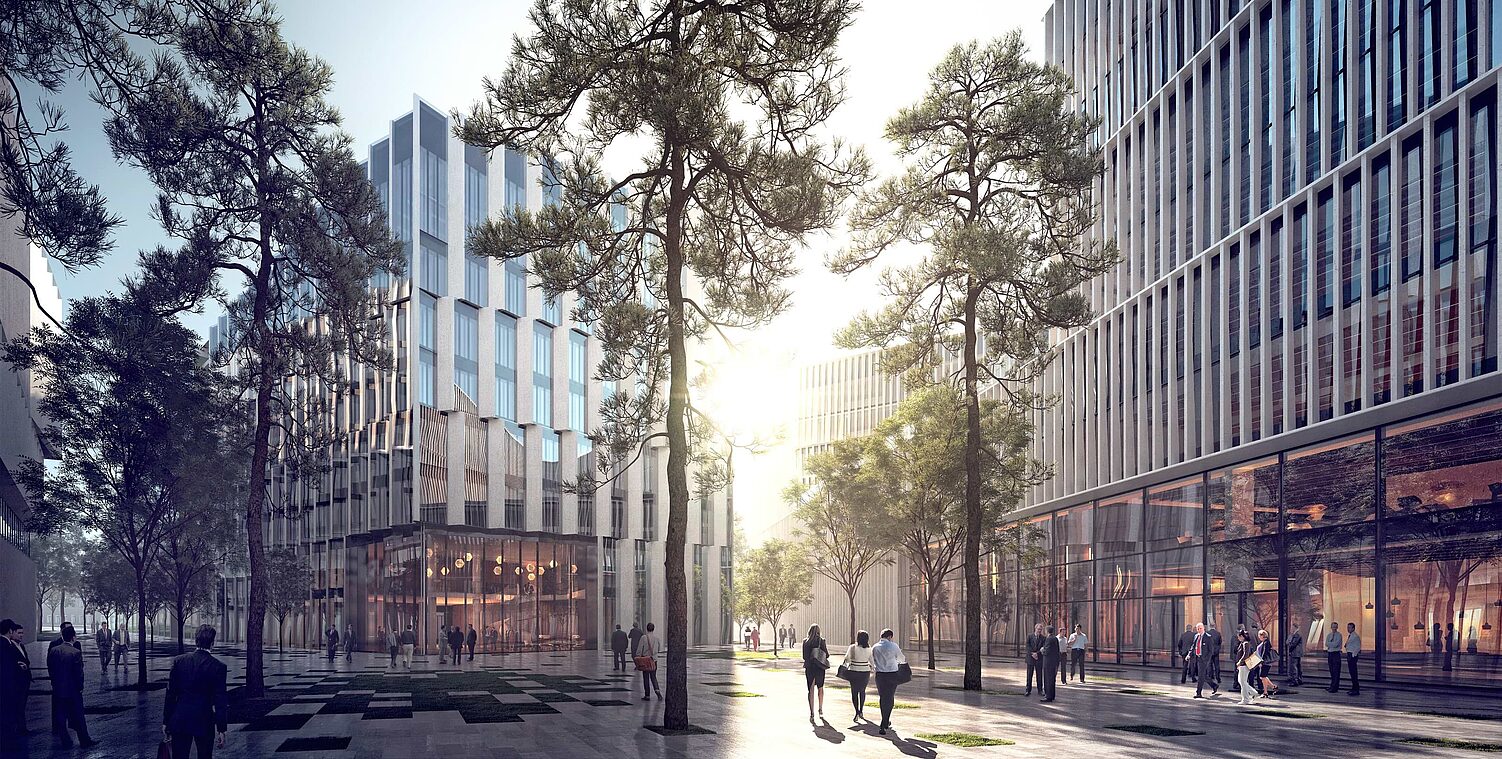More content
Office and Administration

The challenge here was to design a new quarter at the interface of two quite different urban areas – generously proportioned office buildings built in the last 30 years to the east; a significantly older residential area to the west – that would connect and revitalise both forms of urban fabric.
Our job was to develop a high-quality district, but also to create an urban landscape with attractive architecture that made reference to the surrounding built environment and itself became a new point of reference.

Insights
The development creates a new geography that links the urban transparency of the open city block and the architectural transparency of the buildings without any loss of historical references.
We designed a complex of three blocks that fit together in one movement, as it were. They are separated and connected by landscaped grounds: an open space, a sort of green avenue that provides a transition between the neighbouring urban areas and gives local residents and office block users alike a spacious central area that serves as playground, meeting place and retreat.
Gateway, market square and green space breathe life into the new quarter
The offset spatial arrangement provides a clear but flexible framework for the various potential uses. The development comprises various different areas in which building A marks the entrance to the new quarter, building B defines the public area and building C demarcates the extensive green space. Together, the three buildings create a circular path that traverses the entire site.

The compact structures taper towards the top, reducing the building volume in the upper stories. The development offers a multi-layered architectural whole comprising a network of stairways, terraces, hanging gardens and externalised working spaces. One single material was chosen for all three buildings to accentuate the identity of the new district: a light-coloured natural stone typical of Issy-les-Moulineaux.
Economy and ecology sustainably anchored in the architecture
Economy and ecology are complementary in many ways. The compact building style, for example, allows optimum energy performance, while the configuration of the neutral areas between the facades and traffic nodes helps increase flexibility, simplify spatial design and promote sustainable building use. The inert building shell provides a layer of thermal and acoustic insulation.